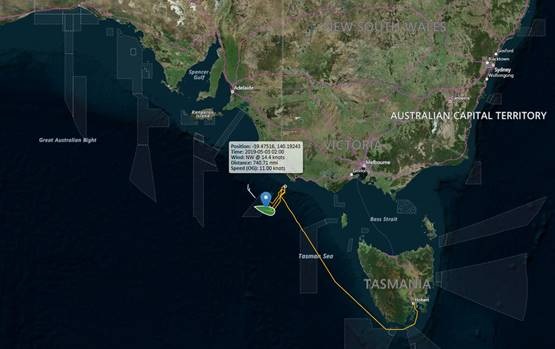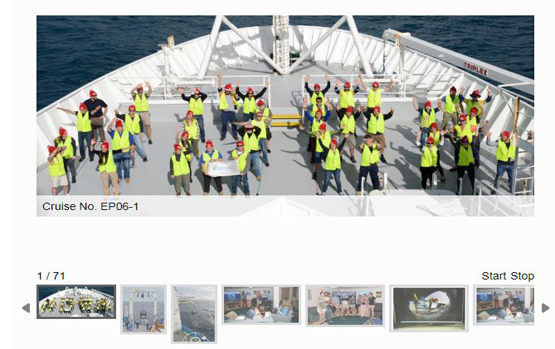The RV Investigator is currently undertaking oceanographic research along the 110°E meridian off Western Australia as part of the second International Indian Ocean Expedition. The voyage is led by Professor Lynnath Beckley of Murdoch University and the research is supported by a grant of sea time on RV Investigator from the CSIRO Marine National Facility.
|
Date: May 21, 2019 |
Time: 1200 AWST |
|
Latitude: 33.5°S |
Longitude: 110°E |
|
Wind direction: WSW |
Wind speed: 12 knots |
|
Swell direction: WSW |
Depth: 2644 m |
|
Air temperature: 15.2°C |
Sea temperature: 18.2°C |
|
Notes: The wind is calming and the sky clearing as RV Investigator traverses the Naturaliste Plateau. The scientists are happy as the sample jars are being dutifully labelled and filled. |
|
The word plankton is derived from the Greek word 'planktos' meaning drifter. Planktonic organisms generally drift in the ocean but some can undertake limited swimming to achieve vertical migration from the depths towards the surface to feed at night.
On our voyage with the RV Investigator, along the 110°E meridian in the south-east Indian Ocean, in addition to filtering very tiny organisms from water samples, we are using a wide variety of nets to capture plankton. These range from a tiny net with 20-micron mesh to catch phytoplankton to a large net with 1000-micron (=1 mm) mesh to catch larger zooplankton like krill, and the larvae of fish and rock lobsters.
One of the most historically significant nets we are using is the Indian Ocean Standard Net. We have a specially built replica of the original nets deployed by 14 different ships during the first Indian Ocean Expedition in the 1960s to compare the biomass (weight) of zooplankton in the surface 200m of the water column across the ocean basin. We are replicating these vertical hauls at the same time of the year and locations along the 110°E meridian to ascertain if there are any major differences in the biomass and composition of the zooplankton between the two voyages.
Dr David Tranter, formerly of CSIRO, and now well-retired, led the Australian plankton research during the first expedition and was responsible for numerous publications revealing the composition and abundance of zooplankton in the south-east Indian Ocean. He and his wife, Helen, even went to live in India for a while to train scientists at the Indian Ocean Biological Centre to process and identify the over 2000 zooplankton samples that were collected by nine countries during the first expedition.
Other equipment that is particularly useful for elucidating plankton is the EZ multiple opening and closing net. This consists of ten 500-micron nets in a big frame and they are electronically opened and closed at different depths in the ocean to sample the zooplankton. This enables comparison of the depths that various zooplankton reside during the day and night and allows us to quantify zooplankton abundance in different depth zones.
Overall, from the range of nets we are using (and a lot of microscope work), we can quantify zooplankton in the south-east Indian Ocean, process this information in food web analyses and include the data in models of ocean functioning.
Be sure to follow our daily Log from One Ten East at https://iioe-2.incois.gov.in and https://wamsi.org.au









